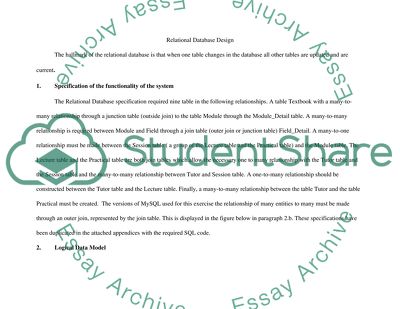Cite this document
(“Relational Database Design Assignment Example | Topics and Well Written Essays - 1500 words”, n.d.)
Retrieved from https://studentshare.org/technology/1528614-relational-database-design
Retrieved from https://studentshare.org/technology/1528614-relational-database-design
(Relational Database Design Assignment Example | Topics and Well Written Essays - 1500 Words)
https://studentshare.org/technology/1528614-relational-database-design.
https://studentshare.org/technology/1528614-relational-database-design.
“Relational Database Design Assignment Example | Topics and Well Written Essays - 1500 Words”, n.d. https://studentshare.org/technology/1528614-relational-database-design.


